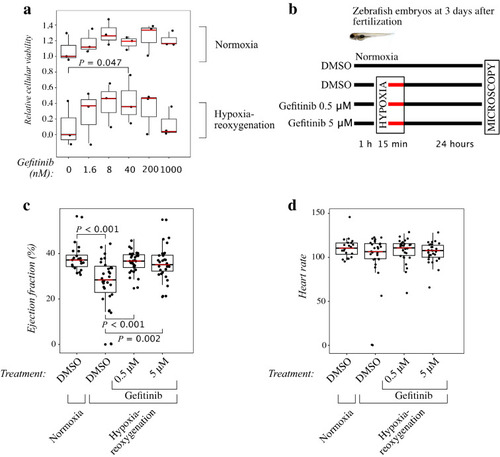Figure 4
- ID
- ZDB-FIG-210822-4
- Publication
- Heliste et al., 2021 - Combined genetic and chemical screens indicate protective potential for EGFR inhibition to cardiomyocytes under hypoxia
- Other Figures
- All Figure Page
- Back to All Figure Page
|
Effects of gefitinib on cardiomyocytes and zebrafish embryos challenged with hypoxia-reoxygenation. ( |
| Fish: | |
|---|---|
| Conditions: | |
| Observed In: | |
| Stage: | Protruding-mouth |

